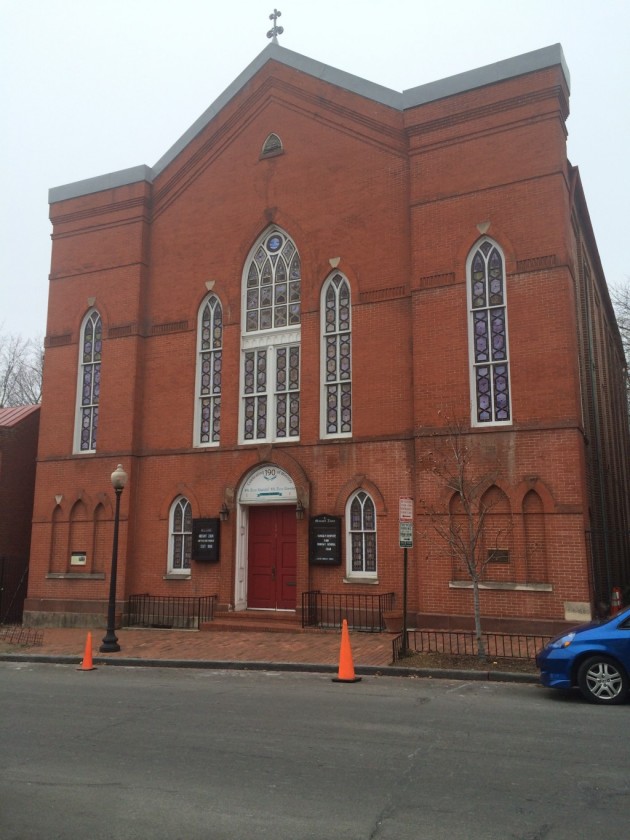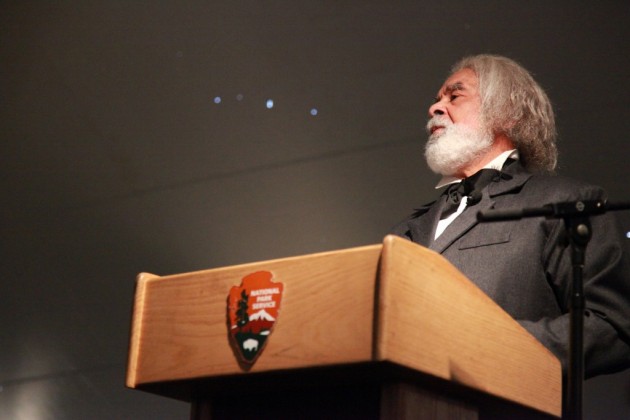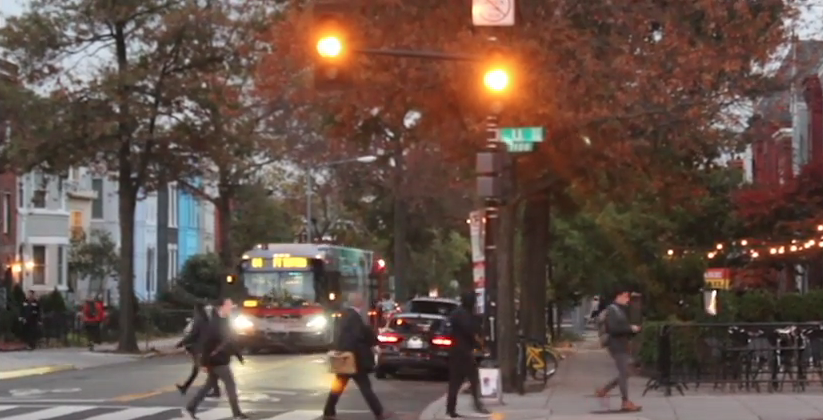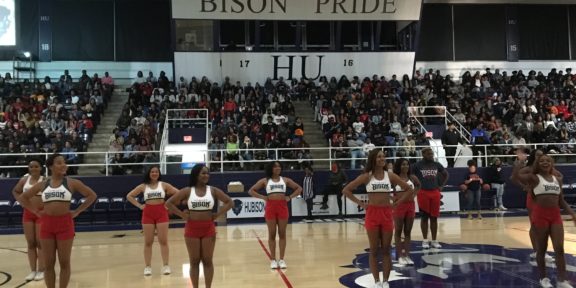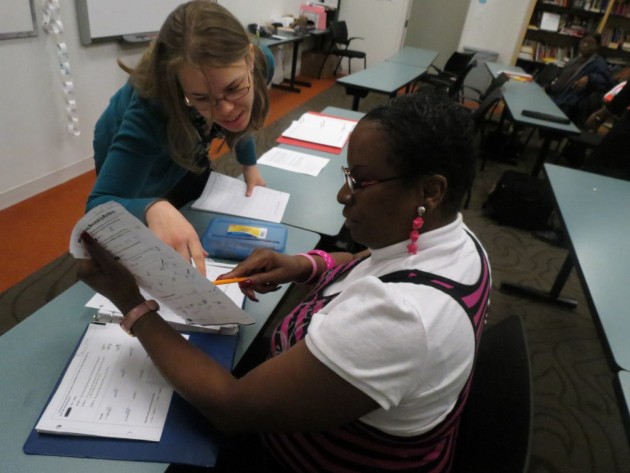
Gerogetown's oldest black church, Mount Zion United Methodist Church, located on 29th Street.
WASHINGTON – When Vernon Ricks, 76, looks out at the new Georgetown, he doesn’t necessarily see the high-end stores, scores of tony shops, the expensive restaurants and bars and homes selling for $1 million and more.
Instead, he recalls the small apartment at the corner of 26th and P Street where he and his siblings were raised by his mother and father. He remembers The Phillips School, where he and his African-American classmates learned the three “Rs” and Rose Park, where they and their friends played baseball games, acted in plays and attended dances on Friday for 25 cents.
Ricks recalls walking down the streets past the black-owned barbershop, the drug store, the cleaners, the shoeshine stand and other African-American business.
All of that is gone now, and the building he grew up in has been replaced by one-bed room condominiums selling for over a half a million dollars.
“It’s funny,” he said, “I can’t even afford an apartment in the building that I grew up in.”
The Georgetown of today is known for expensive homes, stylish boutiques, swanky restaurants, exclusive Georgetown University and for being overwhelmingly white in a city where blacks make up the largest racial group.
The only reminders of the community’s long and deep African-American heritage are three churches – Mount Zion United Methodist Church at 1334 29th St., First Baptist Church at 2624 Dumarton Ave. and Jerusalem Baptist Church at 2600 P St.
Mount Zion United Methodist Church was founded in 1816 and is the oldest of the three. Barbara Thompson is an 81-year-old member of the congregation and has been attending the church for as long as she can remember.
“I have been attending the church since birth, but I didn’t join on my own until I was 15,” Thompson said. “I can remember taking part in service, attending Bible school in the summer time and being involved in the youth fellowship at Rose Park under the direction of Rev. James D. Ford.”
Although the bulk of African Americans have left Georgetown, the churches’ members continue to travel from surrounding areas in Washington, Maryland and Virginia area for worship service on Sundays.
Glois Johnson, 81, has been a member of Mount Zion United Methodist Church for 55 years. She commutes every Sunday to and from Colesville, Md.
“After so many years, you get attached to the people,” Johnson said. “As long as I am able to drive the distance, I will continue to attend worship service.”
The Rev. Rodney A. Teal, senior pastor of Jerusalem Baptist Church, said the black churches that remain in the neighborhood help the Georgetown community remember its rich history. Teal believes regardless of where the members currently reside, the church’s congregational members still have attachments to Georgetown.
“Members who grew up in Georgetown are connected by family ties,” Teal said. “Allowing them to attend church in the neighborhood helps them to retain those memories.”
In 1910, Georgetown’s black population reached a peak of 50 percent. Many of these residents were descendants of slaves or Blacks that emigrated there shortly after the Civil War.
In the 1940s, however, the community began to change as former President Franklin Roosevelt’s New Deal policies worked against blacks in Georgetown. Thousands of well-paid white government workers migrated into Washington, which created a demand for housing and pushed property values even higher in Georgetown. Black residents moved to more-affordable areas.
“The whites saw an opportunity and wanted to own the land,” Rick said. “Since most African-Americans rented their house, they were pushed out and their properties were condemned.”
Georgetown’s population is now less than 4 percent African-American.
The historic churches have served the community for many decades. Currently, however, their memberships are dwindling as parishioners grow older and the churches are not able to pull from the surrounding mostly white neighborhoods for new members.
The pews of Mt. Zion during a recent Sunday service were noticeably sparse and occupied primarily with members in their 60s or older.
Khari Zame Johnson, a member of Mt. Zion, is an exception.
Johnson is 18. He said he feels a special connection to the church. He will serve as the church’s new historian.

